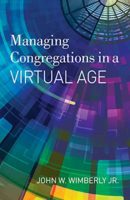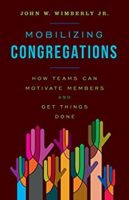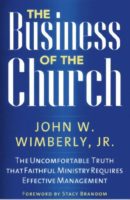
In my fifty years of ministry, I have never seen so many opportunities for the church and clergy as I see today. Indeed, I am jealous of those of you who have the opportunity to pastor in the current environment. My belief in the opportunities in no way discounts or downplays the huge challenges to ministry today. I detailed some of those challenges in Part 1 of this two-part piece. But in this time of instability, the church is ready for innovation.
Our generation is not the first to lead in times of enormous, ground-shaking, threatening change. Martin Luther ministered at a time in which the practices and theology of the Roman Catholic Church were under attack, the feudal economy was collapsing, and nation-states were emerging. Just as the internet has changed everything for us, in Luther’s time, the printing press changed everything, accelerating the rate of social, economic, and political revolution.
Many clergy and laity of that day were forced out of old, familiar routines. They thought the world as they had known it was ending—and it was. Undaunted by the change, Luther transformed history by viewing the shifts around him as opportunities to renew and reform the church. So must we.
Opportunity #1: “Spiritual but Not Religious”
The greatest opportunity today lies in the two youngest generations of adults, who make up 52% of the US population. Gen Z and millennials have a strong and deep affirmation of themselves as “spiritual.” They self-identify as “spiritual but not religious.” Many boomers tell me these two generations won’t join the church because they are not religious. Well, “Spiritual but not religious” describes Jesus! Obviously, Jesus was spiritual, but he also had major problems with institutional religion, as did the Jewish prophets before him. Are we saying that a spiritual but not religious individual like Jesus will never join our congregations?
As more than half of the population, it is impossible to overstate the opportunity these two groups represent. As a pastor, if I can’t help some of these younger people move from affirming spirituality to affirming God to affirming the God revealed in and through Jesus Christ, I am in the wrong vocation. Period. These two generations aren’t a problem; they are a magnificent opportunity.
Paul said to the Greeks, “People of Athens, I see that you are in every way religious.” His use of “religious” correlates well with today’s use of “spiritual.” Paul didn’t dismiss the Athenians because of their idol worship. He saw within their worship a desire for a spiritual life. Affirming their spirituality, he led some of them toward the one, true God. If we do the same with the “spiritual but not religious” of today, our churches will attract the younger generations. Let’s affirm, not dismiss, their spiritual yearnings as we engage them in conversation.
Opportunity #2: The Internet
Our second-greatest opportunity is the internet. The internet is a multiplier. Two examples:
- Toward the end of my career (2006-2012), I was preaching to about 200 people in worship. After worship, I emailed my sermon to a list of about 700. I then posted an audio file of my sermon on a website we created, where it was downloaded as many as 3,000 times some weeks. The internet grew the 200 people in worship to close to 4000 at peak times. What an opportunity to spread the Gospel! It took thirty minutes to create the audio file and five minutes to send the e-blast. It wasn’t anything special I created. I just adopted the best practices I saw being used in growing congregations.
- In the past decade, I worked with a synagogue filled with people over 65. They were at a loss as to how to attract young people to their congregation. I asked them if young people lived in their community. They said, “Absolutely, including some of our own adult kids and grandkids.” I suggested that we get their adult kids on a zoom call. On the call, I asked the participants if there were places where young Jewish people in their region interacted online. They came up with a bunch of listservs, apps and forums where locals share information about everything from childcare to getting the best food for Shabbat dinners. With that input, the congregation created a strategy to get themselves into those online conversations, thereby raising their profile in their local Jewish community.
Opportunity #3: Diversity
The third huge opportunity involves embracing diversity that is the trademark of the U.S. today. Our younger generations take diversity for granted. When they walk into a non-diverse congregation, they don’t get upset; they get confused. They wonder: How did they get such a homogenous group together and why? Such homogeneity is alien to their experience.
At key transformative moments, the church has been able to embrace diversity. When Paul said he wanted to take the Gospel to the Gentiles (or foreigners or non-believers), Peter and his congregation objected. They preferred homogeneity to the heterogeneity Paul was proposing. Fortunately, they let Paul give it a try. The rest is—literally—history.
Reaching the 52% will require us to take their spiritual journeys seriously. It will also require us to follow them into a more diverse future for the church. For this to happen, older people must be led and taught by younger ones. Instead of boomers speculating about being a more diverse church, let’s allow the younger generations to teach us how to be a diverse church.
An Unmapped Future
Finally, the most exciting opportunities aren’t things we can see or name clearly. That is why today is an exhilarating time. For my father’s generation of clergy, the recipes for effective ministry were well known. Sounds boring to me. For my generation, those recipes no longer worked so well. We made some changes but nothing like what is needed in the years ahead. For today’s clergy, the joy will come in discovering what works and what doesn’t work in a radically changing context for ministry. If the 1950s was a time for builders and maintainers, the present and foreseeable future is a time for the inventors, creators, entrepreneurs, and visionaries.
If I didn’t think it was possible, I wouldn’t encourage congregations and clergy moving into an innovation mode of ministry. It is possible. In fifty years of ministry, I have never seen people in the pews as open to change as today. I know, I know: it isn’t true in every congregation. But today I see the older leaders in many congregations finally accept what we have known for decades but resisted: if we don’t change, our congregation will die. Surely it is too late for some congregations; but better late than never for many, many others.
We cannot deny the challenges and hardships of ministry in 2023. They are real and intimidating. But neither can we ignore the unparalleled opportunities that exist. For those who relish an adventure and like traveling without a GPS, I’d say this is a divine time to be a pastor, rabbi, priest, imam, or lay leader.
John Wimberly is an experienced pastor and consultant. As a consultant, he has worked with congregations and judicatories on strategic planning, staff designs for the 21st century, and congregational growth as well as financial and administrative management. He has MBA, MDiv, and PhD (theology) degrees. His books focus on effective management and leadership. John believes congregations can have a bright future!



